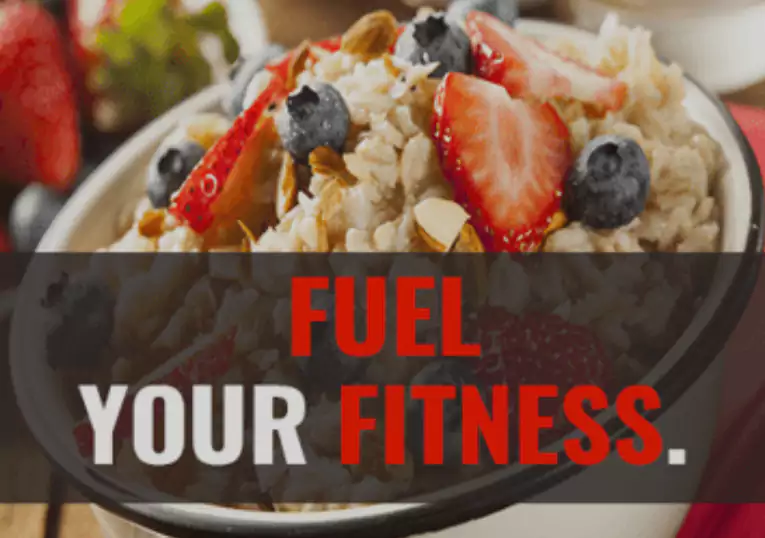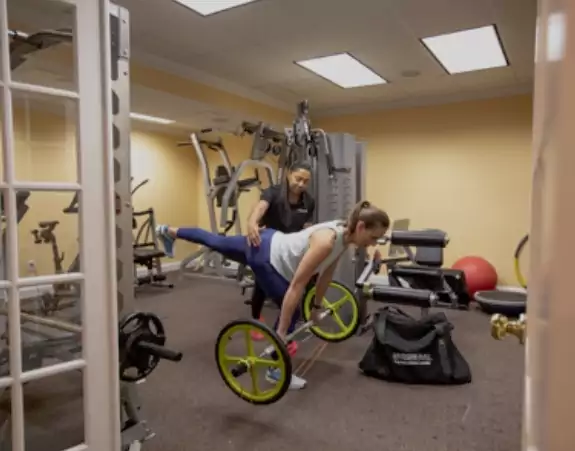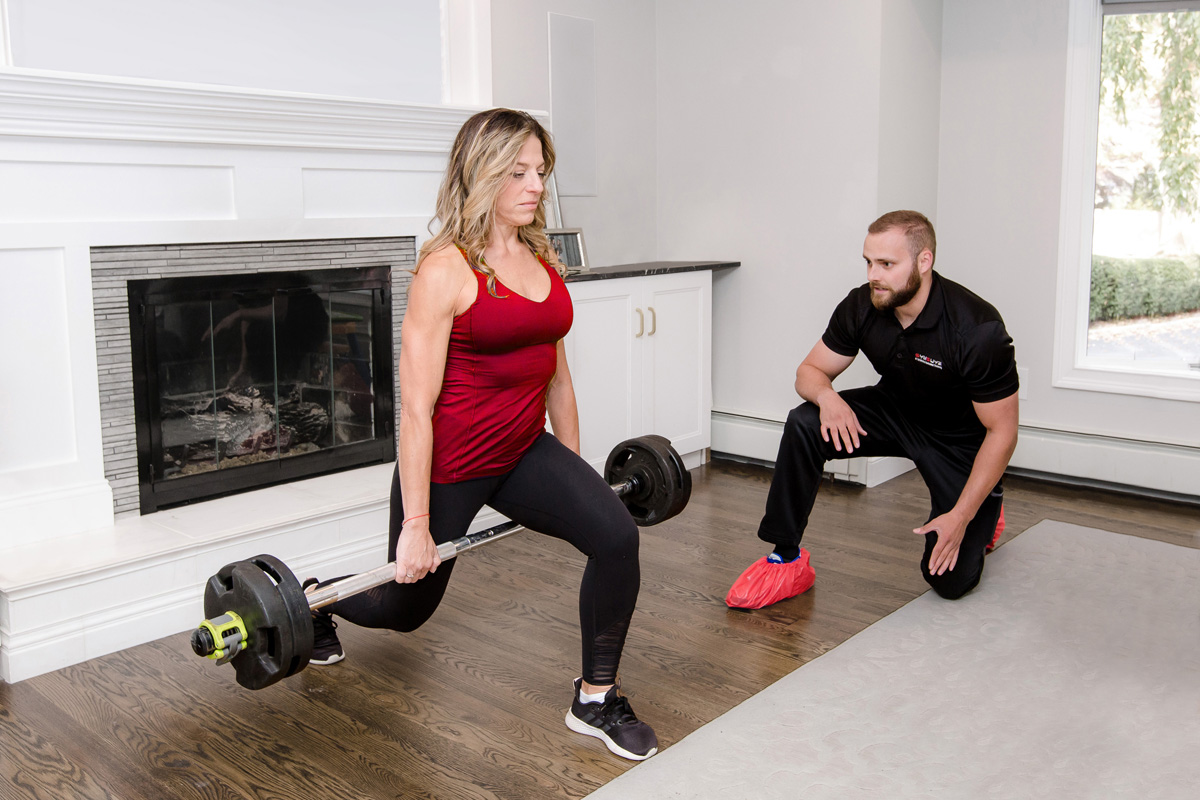We’ve all heard the jokes about always skipping legs. “The best leg workout? Bench press. The best way to grow your calves? Bench press.”
We get it. Legs aren’t the traditional glamor muscles that most gym bros think of when picturing that perfect beach bod.
But, having well-developed legs is not just about aesthetics – it’s also crucial for overall strength, athleticism, and functional movement. Strong legs provide the foundation for activities like running, jumping, and lifting, while also helping to prevent injuries and improve posture.
Unfortunately, many people tend to neglect leg training or treat it as an afterthought, focusing more on upper body workouts. This approach not only hinders overall muscle development but can also lead to strength imbalances and potential injuries.
Plus, Gen Z has brought back short-shorts, so if you plan on staying fashion-forward, it’s time to get those quads swole.
If your goal is to build bigger, more powerful legs, you’ve come to the right place. Take it from someone with slightly better than average legs, here’s everything you need to know, from proper nutrition and training principles to exercise selection and sample routines. With dedication and consistency, you can transform your leg development and unlock new levels of strength and performance.
Regardless of your current fitness level or experience, building bigger legs is an achievable goal. It requires a strategic approach, a willingness to push yourself, and patience. By following the principles and techniques outlined in this guide, you’ll be on your way to developing tree-trunk quads, rock-solid hamstrings, and calves that will turn heads.
Benefits of Training Legs
While the desire for bigger, more muscular legs is often driven by aesthetic goals, there are numerous functional and health benefits that make leg training an essential part of any well-rounded fitness routine.
Improved Overall Strength and Athletic Performance
Compound leg exercises like squats and deadlifts engage multiple major muscle groups simultaneously, making them among the most effective exercises for building full-body strength. Stronger legs translate to better performance in various sports and activities that involve running, jumping, or explosive movements.
Better Balance and Stability
Well-developed leg muscles, particularly the quadriceps, hamstrings, and calves, contribute to improved balance and stability. This can reduce the risk of falls and injuries, especially as we age or participate in activities that challenge our balance.
Increased Metabolic Rate and Fat Loss
Leg muscles are some of the largest in the body, and training them can significantly increase your overall calorie burn and metabolic rate. Building more lean muscle mass, especially in the legs, can help boost your metabolism and support fat loss efforts.
Improved Posture and Reduced Back Pain
Strong leg muscles, particularly the glutes and hamstrings, play a crucial role in supporting proper posture and spinal alignment. This can help alleviate or prevent back pain, which is a common issue for many individuals, especially those with sedentary lifestyles.
Functional Mobility and Independence
As we age, maintaining leg strength becomes increasingly important for preserving functional mobility, independence, and quality of life. Strong legs can make everyday activities like climbing stairs, getting up from a chair, or carrying groceries much easier and less taxing.
By prioritizing leg training and focusing on exercises that target the major muscle groups like the quadriceps, hamstrings, glutes, and calves, you’ll not only develop impressive lower body musculature but also reap a host of functional and health benefits that contribute to overall fitness and well-being.
With the right approach and dedication, you can build bigger, stronger legs.
Assessing Your Current Leg Development
Before embarking on a journey to build bigger legs, it’s essential to take stock of your current condition. Assessing your leg development will help you identify areas that need improvement and any potential muscle imbalances that should be addressed.
Evaluate Muscle Size and Strength
Start by visually examining your leg muscles in the mirror or through progress photos. Pay attention to the size and definition of your quadriceps, hamstrings, calves, and glutes. Note any noticeable differences in size or development between muscle groups.
Next, perform some basic strength assessments like bodyweight squats, lunges, or leg presses. Take note of the weights or resistance levels you can comfortably lift for a given number of repetitions. This will provide a baseline for tracking your progress.
Identify Weaknesses and Imbalances
As you evaluate your leg muscles, be mindful of any glaring weaknesses or imbalances. For example, if your quadriceps appear significantly more developed than your hamstrings, you may have a strength imbalance that could increase your risk of injury.
Similarly, if one leg seems noticeably weaker or smaller than the other, it’s crucial to address this imbalance. Neglecting such imbalances can not only hinder overall leg development but also increase your likelihood of compensating with poor form, leading to potential injuries.
By taking the time to thoroughly assess your current leg development, you can tailor your training approach to target specific weaknesses, correct imbalances, and ensure balanced overall growth. This targeted approach will set you up for safer, more effective, and efficient progress in your quest for bigger, stronger legs.

Nutrition for Leg Growth
Proper nutrition is the foundation for any successful muscle-building endeavor, including leg development. Without adequate caloric intake and the right balance of macronutrients, your efforts in the gym may not yield the desired results. Here are some key nutritional considerations for fostering leg growth:
Calorie Surplus for Muscle Growth
To build bigger legs, you’ll need to consume more calories than your body burns, creating a caloric surplus. This surplus provides the energy and raw materials necessary for muscle growth and repair. However, it’s essential to maintain a moderate surplus, as excessive calorie intake can lead to unwanted fat gain.
Importance of Protein Intake
Protein is the building block of muscle tissue, and it’s crucial to consume sufficient amounts to support muscle growth and recovery. Aim for 0.7-1 gram of protein per pound of body weight per day, depending on your activity level and muscle-building goals. Good sources of protein include lean meats, fish, eggs, dairy, and plant-based options like legumes and protein powders.
Essential Nutrients for Recovery and Growth
While protein and calories are the primary focus, other nutrients play important roles in supporting leg growth and recovery:
Carbohydrates: Provide energy for intense leg workouts and replenish glycogen stores for muscle recovery and growth.
Healthy Fats: Essential for hormone production, nutrient absorption, and overall health.
Vitamins and Minerals: Zinc, magnesium, and B vitamins support protein synthesis, energy production, and muscle recovery.
Proper hydration is also crucial for optimal muscle growth and performance during leg workouts.

Best Leg Workouts
To stimulate leg growth, your workouts need to challenge your muscles in new and progressive ways. Here are some key principles to follow when designing your leg training routine:
Progressive overload is the gradual increase in stress placed on the muscles over time. This stress can come in the form of increased weight, reps, sets, or training intensity. Without progressively overloading your muscles, they have no reason to grow bigger and stronger.
To apply progressive overload, aim to increase the weight, reps, or sets every few weeks. Even small increments, like adding 2.5-5 lbs or an extra rep or two, can make a big difference over time.
To maximize leg development, it’s important to incorporate a variety of exercises and rep ranges. This ensures that you target all the major leg muscles (quads, hamstrings, glutes, and calves) from different angles and with varying levels of resistance.
For example, you might perform heavy squats and leg presses in the 4-6 rep range to build strength and size, then follow up with higher-rep sets of lunges, step-ups, or leg curls in the 10-15 rep range for muscular endurance and shaping.
When it comes to building bigger legs, there are several compound and isolation exercises to consider:
Compound Exercises:
- Squats (back, front, overhead)
- Deadlifts (conventional, sumo, Romanian)
- Lunges (forward, reverse, lateral)
- Step-ups
Isolation Exercises:
- Leg Extensions
- Leg Curls
- Calf Raises (seated, standing, donkey)
- Hip Thrusts
Proper Form and Technique
While exercise selection and progressive overload are important, maintaining proper form and technique is equally crucial. Poor form can not only limit the effectiveness of the exercises but also increase the risk of injury.
Focus on controlling the movement, engaging the target muscles, and maintaining proper joint alignment throughout each exercise. Don’t sacrifice form for weight or reps – it’s better to use slightly lighter weights and perfect your technique before progressing.
By adhering to the principles of progressive overload, incorporating a variety of exercises and rep ranges, and maintaining proper form, you’ll create the optimal training environment for leg growth and development.
Get Caked Up
Building bigger, stronger legs is a journey that requires dedication, consistency, and a strategic approach. By following the principles and techniques outlined in this guide, you’ll be well-equipped to transform your leg development and achieve the powerful, muscular legs you’ve always desired.
Remember, leg training is not just about aesthetics – it’s an investment in your overall strength, athleticism, and functional movement capabilities. Neglecting leg development can lead to muscle imbalances, increased injury risk, and compromised performance in various activities.
Progress may not happen overnight, but with patience and perseverance, you’ll witness the transformation unfold. Celebrate small victories along the way, whether it’s adding weight to your squats, increasing your rep counts, or noticing visible changes in muscle size and definition.
Remember, the pursuit of bigger legs is not just about physical transformation – it’s also about cultivating discipline, mental fortitude, and a sense of accomplishment that will carry over into other areas of your life.
So, what are you waiting for? Lace up your shoes, step into the gym (or invite the gym to your doorstep with GYMGUYZ), and embark on your leg growth journey today. The road may be challenging, but the rewards of bigger, stronger legs and the confidence that comes with them will make it all worthwhile.
Frequently Asked Questions
Does Training Legs Increase Testosterone?
Yes, training legs can help increase testosterone levels in both men and women. Large compound exercises like squats and deadlifts that engage major muscle groups have been shown to stimulate a greater release of testosterone compared to upper body exercises alone. The increased muscular stress and metabolic demand from intense leg workouts signal the body to produce more testosterone, which aids in muscle growth and recovery.
How Long Does it Take to Get Bigger Legs?
The time it takes to get bigger legs can vary considerably depending on several factors, such as your starting point, training experience, genetics, and adherence to proper programming and nutrition. Generally, it takes a minimum of 4-6 weeks of consistent training and a caloric surplus for noticeable increases in muscle size. More advanced lifters may require longer periods of 8-12 weeks or more to see significant leg growth.
It’s also important to note that muscle growth is a gradual process, and patience is key. Trying to rush leg growth through extreme measures can often lead to plateaus or injuries. Consistent dedication to progressive overload, varying your training stimuli, and maintaining a caloric surplus will ultimately yield the best results over time.
What Are the Best Leg Workouts?
Some of the best leg workouts for building bigger, stronger legs include:
- Squat Variations (Back Squat, Front Squat, Goblet Squat)
- Deadlift Variations (Conventional, Sumo, Romanian)
- Lunges (Forward, Reverse, Lateral)
- Leg Press
- Step-Ups
- Hip Thrusts
- Leg Extensions
- Leg Curls
- Calf Raises (Seated, Standing, Donkey)
The most effective leg routines often incorporate a combination of compound exercises like squats and deadlifts, along with targeted isolation exercises for individual muscle groups like quadriceps, hamstrings, and calves. Varying the exercises, rep ranges, and intensity levels from workout to workout can help ensure well-rounded leg development and continued progress over time.
Additionally, prioritizing proper form and technique on each exercise is crucial for maximizing muscle growth and minimizing the risk of injury.



